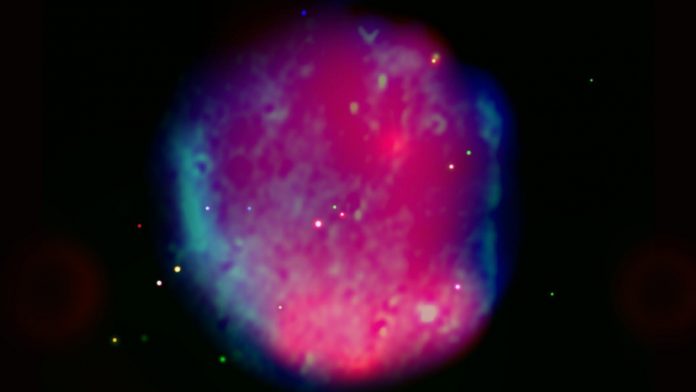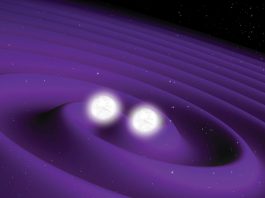Astronomers at the Max Planck Institute for Extraterrestrial Physics have identified a previously unknown supernova remnant, named Hoinga.
The finding was confirmed in archival radio data and marks the first discovery of a joint Australian-eROSITA partnership established to explore our Galaxy using multiple wavelengths, from low-frequency radio waves to energetic X-rays. The Hoinga supernova remnant is very large and located far from the galactic plane, implying that the next years might bring many more discoveries.
In our Milky Way, astronomers estimate that a supernova should happen on average every 30 to 50 years. While the supernova itself is only observable on a timescale of months, their remnants can be detected for about 100,000 years. These remnants are composed of the material ejected by the exploding star at high velocities and forming shocks when hitting the surrounding interstellar medium.
An international team of astronomers is now using the all-sky scans of the eROSITA X-ray telescope to look for previously unknown supernova remnants. With temperatures of millions of the degrees, the debris of such supernovae emits high-energy radiation, i.e. they should show up in the high-quality X-ray survey data.
Hoinga is the largest supernova remnant ever discovered in X-rays. With a diameter of about 4.4 degrees, it covers an area about 90 times bigger than the size of the full Moon. Most previous searches for supernova remnants have concentrated on the disk of our galaxy, where star formation activity is highest and stellar remnants therefore should be more numerous, but it seems that many supernova remnants have been overlooked by this search strategy.
After the astronomers found the object in the eROSITA all-sky data, they turned to other resources to confirm its nature. Hoinga is also visible in data taken by the ROSAT X-ray telescope 30 years ago, but it was not noticed before due to its faintness and its location at high galactic latitude. However, the real confirmation came from radio data, the spectral band where 90% of all known supernova remnants were found so far.
Natasha Walker-Hurley, from the Curtin University node of the International Centre for Radio Astronomy Research in Australia, explained: “We went through archival radio data and it had been sitting there, just waiting to be discovered. The radio emission in 10-year-old surveys clearly confirmed that Hoinga is a supernova remnant, so there may be even more of these out there waiting for keen eyes.”









